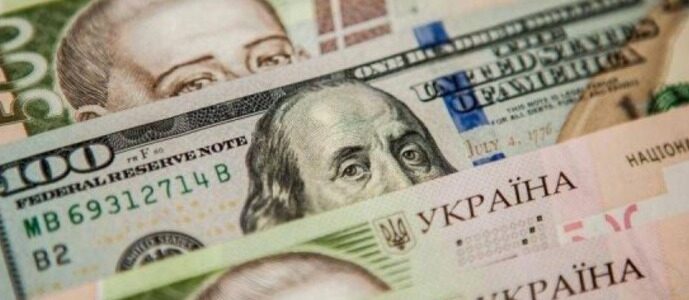
The National Bank of Ukraine (NBU), after strengthening the official exchange rate of the national currency by 4 kopecks on Thursday, on Friday lowered it by 7 kopecks to a new historical low of 41.4912 UAH/$1.
According to Taras Lisovyi, head of the treasury department of Globus Bank, trading on the interbank foreign exchange market started at 41.50/41.70 UAH/$1, by mid-day the rate strengthened to 41.48/41.51 UAH/$1, and by the end of the trading session it slightly weakened to 41.4950/41.5050 UAH/$1.
“What has been happening in the foreign exchange market over the past two weeks is a logical and objective consequence of rising inflation due to rising electricity tariffs and unprecedented power outages (…),” the banker said.
The volume of deals in the Bloomberg system amounted to $292.42 million. The National Bank set the reference rate at 12:00 on Friday at 41.4944 UAH/$1, compared to 41.4166 UAH/$1 a day earlier. The dollar on the cash market on Friday also rose by about 5 kopecks by mid-afternoon, but at 1 a.m. it fell by the same amount, then rose slightly again: buying – to 41.83 UAH/$1, selling – to $41.93 UAH/$1.
Since the beginning of 2024, the dollar has appreciated by 9.2%, or UAH 3.49, at the official exchange rate, and by 13.4%, or UAH 4.93, since the National Bank switched to managed flexibility on October 3, 2023. Since the beginning of July, the official hryvnia exchange rate has fallen by 2.6%, or UAH 1.04, while in June its decline slowed to 3 kopecks after weakening by 90 kopecks in May.
The NBU attributed the current weakening of the hryvnia to the expansion of net demand over the past two months, driven by increased budget spending, much of which materializes in demand for foreign currency, the May currency liberalization, and a temporary decrease in the supply of foreign currency by the agricultural sector. The NBU explained the latter factor by the exhaustion of last year’s harvest and the fact that, at the request of the Cabinet of Ministers, it extended the deadline for the return of agricultural export earnings to 120 days, which had previously been reduced from 180 to 90 days.
At the same time, the NBU emphasized that there are all the prerequisites for ensuring the stability of the foreign exchange market.
“Soon, foreign currency from the sale of the new harvest will begin to arrive, and the functioning of the sea corridor creates opportunities for active exports of other commodity groups. Also, international aid from our partners will soon become more active: while in the first half of the year Ukraine received about $14 billion, the forecast for the second half of the year is $24 billion,” the NBU said.
In particular, this month the central bank expects to receive $3.9 billion from the United States. “Accordingly, international reserves will again exceed $40 billion,” the central bank said.
As reported, the National Bank’s net sale of dollars in the second week of July decreased to $532.1 million from $630.91 million in the previous week. In June, it amounted to $2.99 billion compared to $3.07 billion in May.